Crew 186 Operations Report 04JAN2018
SOL: 04
Name of person filing report: M. Grande
Non-nominal systems: None
Notes on non-nominal systems: Generator system limping along again on the now-nominal routine. It was, however, displaying “Low Battery” and running at only 5.6 V this morning, running on the old 10/17 battery which had been fully charged. I will now be running the 10/17 battery every evening and charging that one during the day, just as we were doing before while keeping the new 9/17 battery in storage (fully charged).
Generator (hours run): 14.1h
Generator turned off, charging battery at 8:40am
Generator turned on at 5:10pm
Solar— SOC
@ 8:40am : 100%
@ 5:10pm : 88%
Diesel: 58%
Propane: 35%
Ethanol Free Gasoline (5 Gallon containers for ATV): 8.75 Gallons
Water (trailer): 10 Gallons
Water (static): 351 Gallons
Trailer to Static Pump used: No
Water (loft) – Static to Loft Pump used: Yes
Water Meter: 129033.7 Gallons
Toilet tank emptied: No
ATVs Used: Honda, 350.1, 350.2, 350.3
Oil Added? No
ATV Fuel Used: 0.25 Gallons
# Hours the ATVs were used today: 01:00 hours
Notes on ATVs: ATVs were nominal except for 300, whose engine I couldn’t keep running for the life of me. I tried various combinations and levels and durations of choking and throttling, with input from the crew. The engine just kept dying on me immediately as soon as I let off the gas. Two hours later, GreenHab Officer Mark was able to turn it on immediately to bring it slightly back to its parking space.
Deimos rover used: No
Hours: 97.4
Beginning charge: 100%
Ending charge:
Currently charging: No
Sojourner rover used: Assigned to director only.
Hours: 5.1
Beginning charge: 100%
Ending charge:
Currently charging: Yes
Spirit rover used: No
Hours: 8.7
Beginning charge: 100%
Ending charge:
Currently charging: No
Opportunity rover used: No
Hours: 4.3
Beginning charge:
Ending charge:
Currently charging: Yes
Curiosity rover used: No
Hours: 3.1
Beginning charge: 100%
Ending charge:
Currently charging: No
HabCar used and why, where? No
General notes and comments: So much fun riding the ATVs out all together today!! We took an ATV-only road out to the Martian moons, over twisty and bumpy roads. We hiked only a little bit around Yellow Moon and Beige Moon, and I manned the GoPro for some video footage. We’re all pretty comfortable on the ATVs now, so it was a nice ride. Today’s challenge, though, was implementing more bungee cords and also Commander Max’s webbing/straps to secure down the big Trek (portable spectrometer) case plus a tool box and emergency water. Rather difficult in bulky EVA gloves!
Other difficult things: seeing inside the gas tank with that bubble helmet. Basically impossible, so I had to search for the glisten of the gas inside. Also, those large darned rubber gloves. They’re even worse than the bulky EVA gloves, but I have to use them every day with my small hands, switching out the generator battery.
Summary of internet: All nominal
Summary of suits and radios: All nominal
Summary of Hab operations: All nominal
Summary of GreenHab operations: All nominal
Summary of ScienceDome operations: All nominal
Summary of RAM operations: Not Operational
Summary of health and safety issues: Crew is Healthy
Questions, concerns and requests to Mission Support: The bread machine seems to be slowly dying on us, and this is very sad.
Regards,
Melanie Grande, Crew 186 Engineer


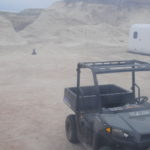
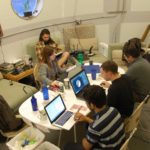
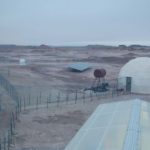
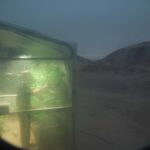
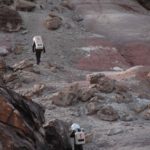
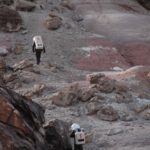
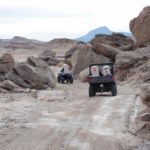


You must be logged in to post a comment.